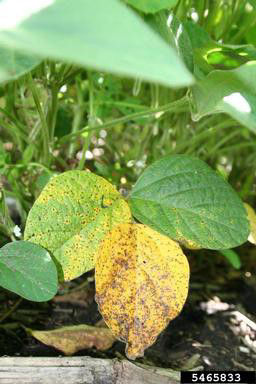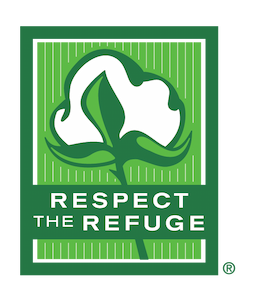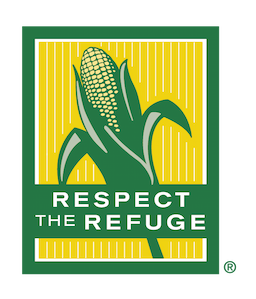Protect Against Septoria Leaf Spot
December 12, 2018

Septoria leaf spot in soybeans, commonly known as brown spot, is caused by the fungus Septoria glycines. The disease is widely distributed across U.S. soybean growing regions from the South through the Midwest, including the upper Midwest. Reduced tillage leaves any infested crop residues on the soil surface, which allows the brown spot pathogen to survive over winter, particularly in warmer climates. It’s a common disease that farmers should protect against every year.
Identification and Lifecycle
Symptoms of Septoria brown spot are small, angular to somewhat circular, red- to brown-colored lesions, ranging from minute specks to ¼-inch diameter spots. They appear on the lower soybean leaves. Individual spots can merge with adjacent lesions to form large, irregular-shaped leaf blotches. Small dark specks may appear on older lesions. The fungus causes infected leaves to turn yellow and drop from the plants.
The lifecycle of the Septoria brown spot fungus begins when it overwinters as small brown fruiting bodies (pycnidia) in leaf and stem debris, crop residue and infected seed. The microscopic spores produced on living tissues or dead plants are released during wet weather. Wind and rainfall disperse the spores onto healthy plants and infection begins.
Favorable warm, wet weather conditions – 59 to 86 degrees F with 77 degrees optimal – enhance infection and development of disease symptoms. When optimal conditions are reached during the brown spot lifecycle, the infection may move up through the plant, and a soybean field may appear yellow or brown. Infected leaves late in the growing season may turn rusty brown and prematurely drop from the plant.
The Septoria leaf spot fungus is extremely common in seedling leaves of young crops and during the first month following planting.
Crop Damage
The primary effect of brown spot is premature defoliation of the lower soybean leaves, as early as the V2 growth stage. Smaller seed size results from severe brown spot infection. Soybean yield losses due to brown spot range from 8 to 15 percent nationally and occur when 25 to 50 percent of the canopy defoliates, according to the University of Nebraska.
In years in which late summer is wetter than average or fields experience extended dew periods or fog, symptoms may reoccur on mature foliage during pod fill, resulting in significant yield loss from premature defoliation.
Managing Septoria Leaf Spot
Farmers have several options to manage Septoria leaf spot (brown spot), including variety selection, scouting, cultural practices and fungicides. These best management practices also help minimize the potential for fungicide resistance. Following seasonal reports on disease occurrences from county Extension agronomists is another helpful practice.
Variety selection
No soybean variety is completely resistant to brown spot, but varieties with partial resistance can be used to help protect against the disease. The relative maturity of a soybean variety influences the onset of brown spot. Symptoms appear earlier in the growing season with earlier-maturing varieties.
Plant high-quality seed within a maturity group to fit your climate, and don’t skimp on seeding rates. While there is no complete resistance to Septoria leaf spot in soybean varieties, good genetics can add 10 to 12 bushels in yield per acre. Choose more than one variety to manage risk and yield potential.
Scouting
When scouting soybean fields for weeds and insects, check for the presence of brown spot and other foliar diseases. Begin looking for symptoms on the leaves of young seedlings, especially during the first month after planting. Typically, you will see signs of the disease throughout a field. If you suspect brown spot, take samples and send them to the diagnostic lab recommended by your county Extension agent, or refer to a pest management guide.
Cultural practices
Rotate crops with at least one year between soybean crops. Cultivate crop residues prior to planting to help lower inoculum levels and reduce disease. Disking after harvest is another helpful practice. Plant disease-free seed. Good weed control from preplant, at planting and throughout the growing season also helps protect against diseases and other pests.
Fungicides
Septoria leaf spot can cause yield losses of 15 percent or more. In general, if foliar disease exhibits significant levels of infection at R2 growth stage with favorable weather conditions, a fungicide application may be warranted. According to the University of Wisconsin, foliar fungicides applied to soybeans from bloom to pod fill reduces Septoria leaf spot severity and increases grain yield. Always use full labeled rates and follow label instructions.
Bayer solutions to control diseases in soybeans
A fungicide seed treatment can provide a healthy start for seedlings. Multiple fungal pests can impact soybean seeds and seedlings immediately after planting, and EverGol® Energy SB can protect against pests causing the most damage such as Rhizoctonia solani, Fusarium spp and Pythium spp.
Also, timely foliar fungicide applications help protect soybean plants from fungal diseases, including Septoria leaf spot, through the season. For farmers, a fungicide decision is a matter of considering production needs, past history in the fields, commodity prices, proper timing and risk management.
Delaro® fungicide offers an unmatched broad-spectrum control. Its advanced formulation containing the latest triazole technology delivers best-in-class dual mode of action residual and improved plant health. In soybeans, the ideal time to first apply Delaro is prior to disease development, between R2 and R5, with applications repeated as necessary. Disease-susceptible cultivars and seed soybeans are most likely to benefit from a Delaro application. For cost efficiency, Delaro can be tankmixed with insecticides and applied in the same trip across the field.
Before applying any fungicide, please read the entire label for the best possible results and to confirm that the product is effective on the disease you need to control. Not every product is suitable for every situation, and correct application technique will ensure the best results. Not all products are registered for use in every state.






